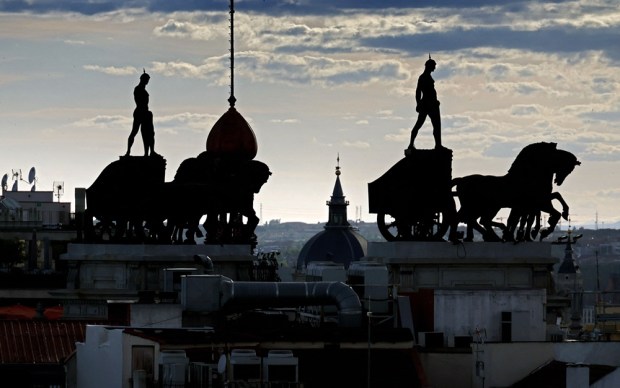We had a fine Spectator Winemaker Lunch with Olivier Humbrecht of leading Alsace producer Domaine Zind Humbrecht the other day. Olivier is generally agreed to be among the most gifted winemakers of his generation. Not just in Alsace but anywhere. He is also one of the humblest and most charmingly self-deprecating.
He showed us half a dozen wines over lunch. All were organic/biodynamic (Alsace accounts for 15 per cent of the world’s biodynamic vineyards, quite something for such a small region) and all were stunning.
We started with a bone dry but gloriously, grapily aromatic 2014 Zind-Humbrecht Muscat Goldert Grand Cru before moving onto a pair Rieslings: the 2014 Zind-Humbrecht Roche Calcaire and the 2014 Zind-Humbrecht Roche Volcanique. These were both crisp, clean and zingily fresh but – goodness! – they were quite different. The vintage, the grapes, the winemaking were all identical. All that differed was the soil, one limestone and one volcanique and what a difference that made. The one was oily, fresh, spicy and peachy with a touch of sweetness around the tongue; the other was herbal and citrusy with that pronounced acidity which is so typical of deep limestone soil. Both were delicious.
We followed these with the voluptuously rounded 2014 Zind-Humbrecht Clos Windsbuhl Pinot Gris, a grape that positively sings in Alsace in a way that it doesn’t anywhere else. There’s a weight to Pinot Gris here, a texture and a silkiness that simply can’t be replicated elsewhere. And there’s a spicy, honeyed richness in the mouth, backed by a drying mineral finish. It certainly knocks spots off that dread Pinot Grigio of Italy.
Then a 2013 Zind-Humbrecht Gewurztraminer Rangen de Thann Clos Saint Urbain Grand Cru a remarkable, mouth-fillingly thrill of a wine. Such elegance, such exuberance but such restraint too, like a plunging thoroughbred kept tight on the rein. There was the hallmark Gewurz spice and the lychee notes but these were kept beautifully in check by the minerality of the soil, and the honeyed sweetness faded to an almost dry finish. It couldn’t have matched the English cheeseboard better and for those who insist on red wine or port with cheese, I beg them to try an off-dry Gewurztraminer such as this, the carefully judged inherent sweetness of the wine contrasting beautifully with the salty tang of the Stilton.
Finally the majestic 2010 Zind-Humbrecht Pinot Gris Clos Jebsal Vendange Tardive, a late-picked, botrytis-affected copper bottomed beauty. Many sweet wines dance on the tongue and delight, only to be let down by a flabby cloyingness on the finish. What was so wonderful about this Pinot Gris was that its fabulous barley sugar sweetness, its peachy, spicy richness was underpinned by that typical Alsace freshness and acidity. As Olivier pointed out, great sweet wines manage to hide their sweetness and are balanced by a fine acidity. They are great wines that just happen to be sweet.
Alsace is my favourite of all French wine regions and it’s always surprised me how hard a sell its wines are. Maybe folk confuse them with German wines. But in Alsace there is everything from fine sparklers to crisp, bone dry Rieslings to off-dry Pinot Gris and gloriously out there sweet Gewurztraminers and Muscats. And don’t forget the fascinating, Burgundy-baiting Pinot Noirs and outrageously moreish eaux de vies.
A few days after our lunch with Olivier I spent a few days in Alsace reminding myself why I love it so much. I’ll report back on that anon.
The post Our lunch with Olivier Humbrecht appeared first on The Spectator.
Got something to add? Join the discussion and comment below.
Get 10 issues for just $10
Subscribe to The Spectator Australia today for the next 10 magazine issues, plus full online access, for just $10.













Comments
Don't miss out
Join the conversation with other Spectator Australia readers. Subscribe to leave a comment.
SUBSCRIBEAlready a subscriber? Log in